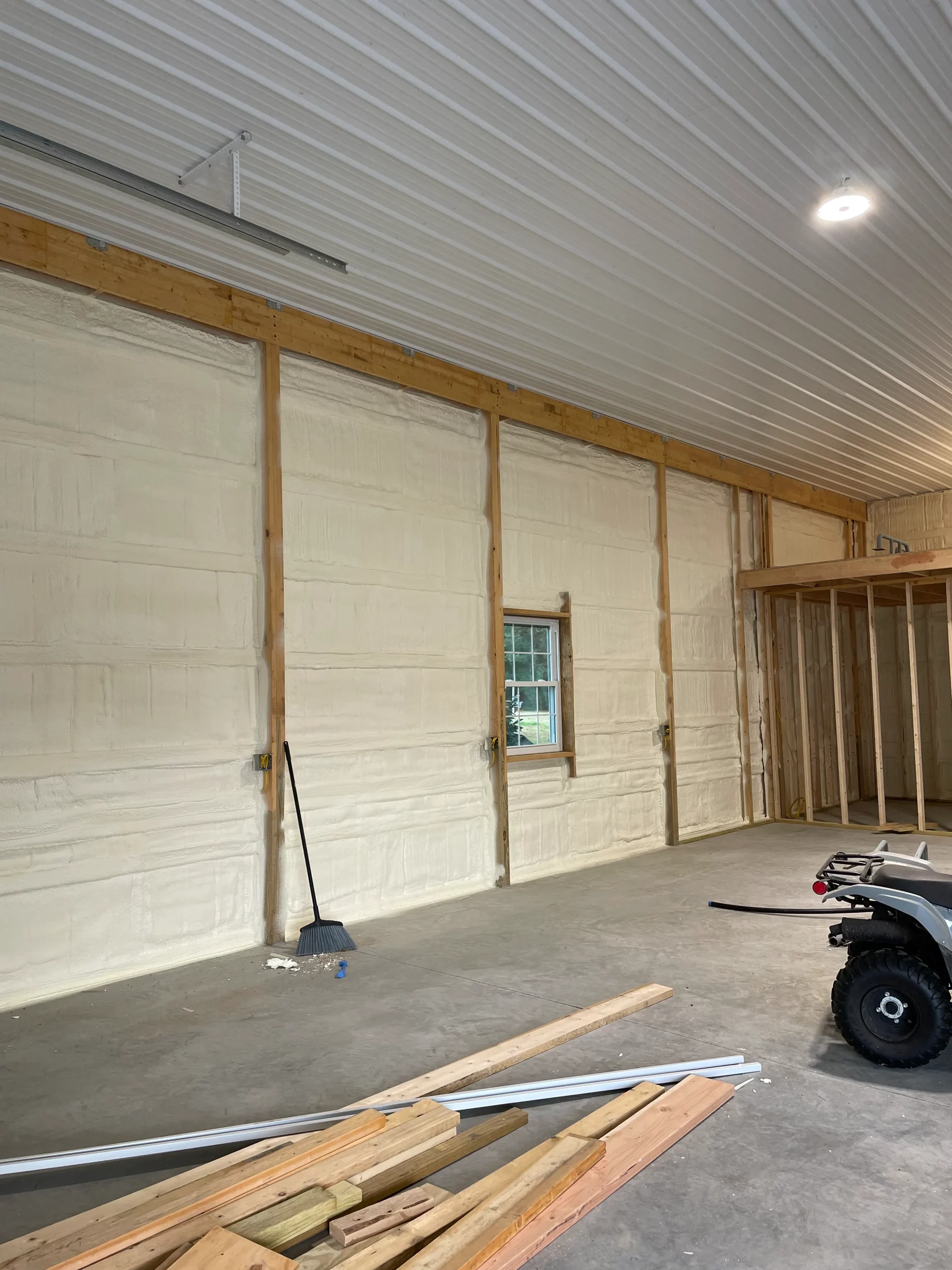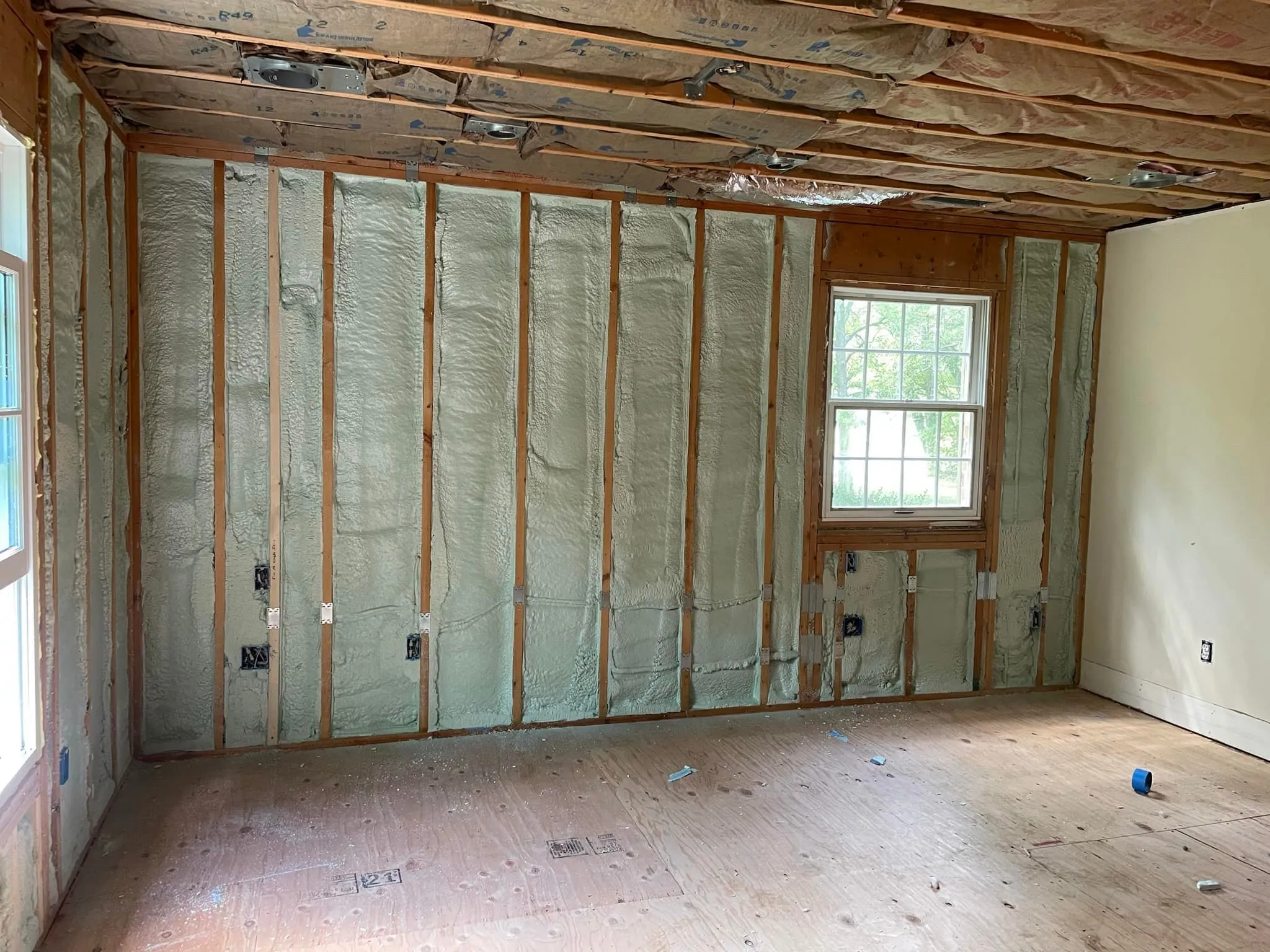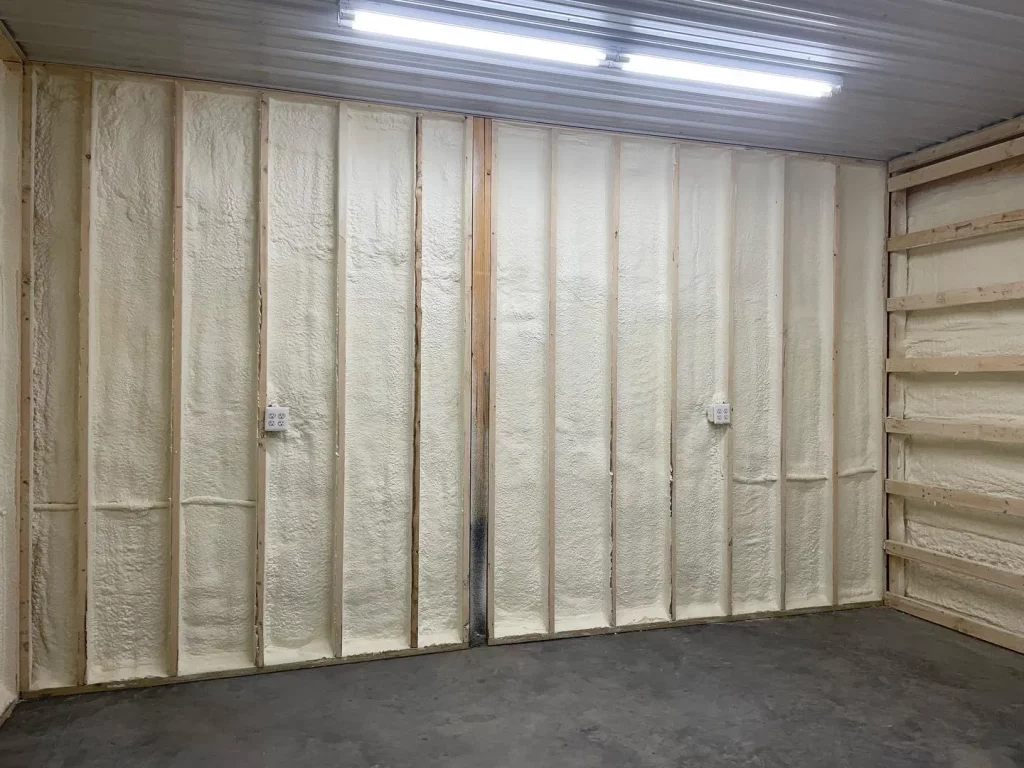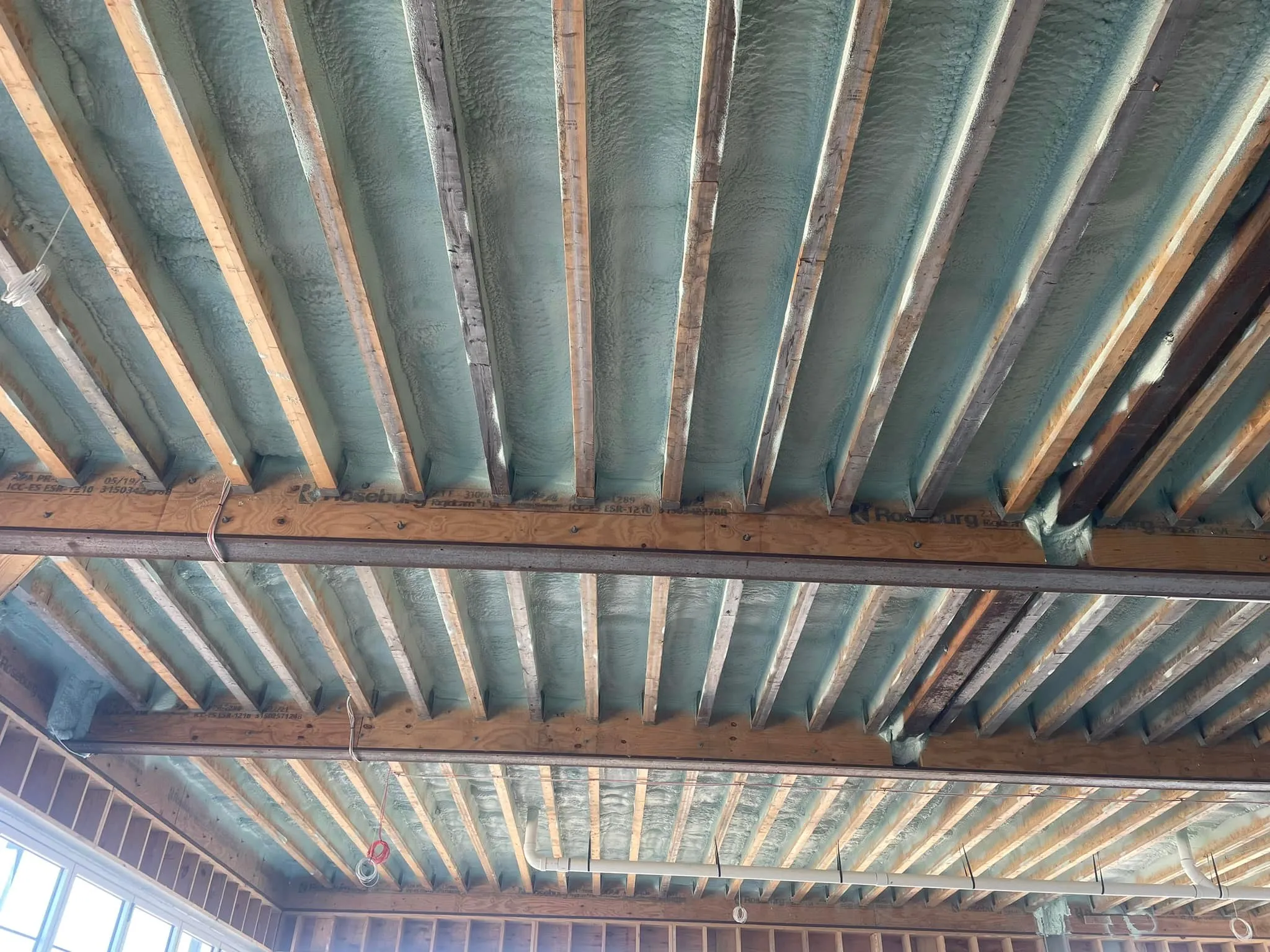

Spray foam insulation is a highly effective material for reducing unwanted noise in Annapolis homes, working primarily by creating a powerful air seal. Unlike traditional insulation, spray foam expands to fill every crack and crevice in a wall or ceiling cavity, which blocks the pathways that airborne sound uses to travel. While its main function is thermal control, this comprehensive air barrier significantly dampens outside noises like traffic and neighborhood activity, as well as interior sounds between rooms. Open-cell spray foam, in particular, excels at absorbing sound waves, while denser closed-cell foam is better at blocking their transmission.
This article breaks down how spray foam contributes to a quieter home, compares the two main types, and identifies the best applications for sound control. The information provided is based on extensive field experience helping homeowners in Maryland manage both thermal and acoustic comfort.
Sound travels through two primary means: through the air and through the structure of a building. Spray foam insulation addresses both of these pathways.
First, by creating a monolithic air barrier, it stops airborne sound dead in its tracks. A significant amount of exterior noise enters a home through tiny gaps in the building envelope. An analysis from the U.S. Department of Energy explains that air leakage can account for a large portion of a home’s energy loss and, by extension, is a major source of noise intrusion. Spray foam expands upon application, sealing these gaps and creating a much quieter interior environment.
Second, the foam itself has properties that dampen sound vibrations. This is measured using a Sound Transmission Class (STC) rating, which indicates how well a partition reduces airborne sound. For context, an uninsulated interior wall typically has an STC rating in the mid-30s, according to data from acoustics specialists at Soundproof Cow. Adding spray foam insulation can increase that number substantially, making conversations or television sounds from an adjacent room much less audible.
The choice between open-cell and closed-cell spray foam often depends on the specific soundproofing goal. Open-cell foam is the superior option for sound absorption, while closed-cell foam provides better sound blocking in addition to its structural and thermal benefits.
| Feature | Open-Cell Spray Foam | Closed-Cell Spray Foam |
|---|---|---|
| Primary Sound Function | Sound Absorption | Sound Blocking |
| Structure | Soft, flexible, porous cells | Rigid, dense, compact cells |
| Density | Low (approx. 0.5 lb/ft³) | High (approx. 2.0 lb/ft³) |
| Best For | Interior walls, home theaters, ceilings between floors | Exterior walls, basements, anywhere a vapor barrier is needed |
| Cost | Lower | Higher |
| R-Value per Inch | ~R-3.7 | ~R-6.5 |
Open-cell foam’s sponge-like structure is excellent at trapping and dissipating sound waves, making it ideal for reducing echo and noise levels within a room or between floors. Closed-cell foam’s density and rigidity help to block the transmission of sound energy from one side of a wall to the other.

Not all noise is the same, and spray foam is more effective against certain types.
Bonus Tip: For areas like home theaters or recording studios, combining open-cell spray foam within the wall cavities with a layer of mass-loaded vinyl and two layers of drywall creates a highly effective soundproof assembly.
Before committing to spray foam for soundproofing, it’s important to evaluate a few factors to ensure it aligns with your goals and budget.
To get the most acoustic benefit from spray foam, strategic application is key, especially given the mix of historic and modern homes in the Annapolis area.
No product can completely soundproof a room, but spray foam can significantly reduce noise transmission. It lowers the perceived sound level by dampening vibrations and sealing air leaks, making rooms much quieter.
Yes, applying spray foam around plumbing pipes within walls is an excellent way to dampen the sound of running water or draining. The foam isolates the pipes from the wall studs, reducing vibration transfer.
As mentioned earlier, the STC rating measures how well a partition attenuates sound. A standard wall may have an STC of 35; adding spray foam can increase this rating to 50 or higher, a level where loud speech is barely audible.
For a home theater, open-cell foam is typically the preferred choice for interior walls. Its primary function here is to absorb sound and prevent echo within the room, improving audio quality, while also reducing sound transmission to adjacent spaces.
While the upfront cost of spray foam can be higher than materials like fiberglass batts, its dual thermal and acoustic benefits often make it a more valuable long-term investment. It eliminates the need for separate air-sealing products and provides energy savings that other materials do not.
Yes, applying spray foam to shared walls (party walls) in a townhouse or duplex is a very effective way to reduce the transmission of airborne noise like voices and music from next door.
Spray foam insulation is a powerful tool for creating a quieter, more comfortable home environment. By sealing air leaks and either absorbing or blocking sound waves, it addresses noise at its source. The key is to choose the right type of foam for your specific needs and ensure it is installed correctly. Before making a decision, consider the type of noise you want to reduce, your budget, and the construction of your home.
If you have questions about using insulation for soundproofing or want to discuss the specific needs of your home, Peninsula Insulation, LLC is here to help. Contact a specialist to explore your options by calling (410) 770-2624 or emailing wil@mdsprayfoam.net.


